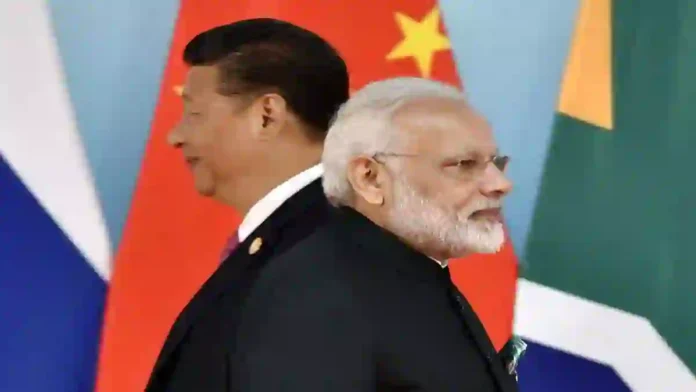India’s refusal to endorse the Shanghai Cooperation Organisation (SCO) joint statement in June 2025 marks a significant escalation in its pushback against China’s regional strategy, particularly regarding terrorism and Pakistan. The immediate trigger was the draft statement’s omission of the April 22 terror attack in Jammu and Kashmir, where 26 civilians, including a Nepali national, were killed by The Resistance Front—a group India links to Lashkar-e-Taiba and accuses Pakistan of supporting.
Defence Minister Rajnath Singh made it clear that India would not accept any document that failed to address cross-border terrorism or held double standards on terror, implicitly targeting Pakistan and, by extension, China’s shielding of its ally.
Read- Rajnath Singh Calls For Permanent Border Solution In Talks With China’s Dong Jun
This diplomatic standoff at the SCO is only the latest in a series of India-China tensions. China’s overt support for Pakistan extends beyond the diplomatic sphere into military and economic domains.
According to a recent US intelligence report, Pakistan’s military modernisation and nuclear upgrades are heavily dependent on Chinese support, with both countries conducting regular joint military exercises and China providing advanced equipment and economic assistance. This deepening military partnership is viewed in New Delhi as a direct threat to its security interests.
Economically, China has adopted a dual-track approach in its dealings with India. While diplomatic engagement continues—highlighted by recent high-level visits and dialogue—China has simultaneously weaponized trade. Beijing has halted or delayed critical exports to India, including rare earth magnets, specialty fertilizers, and industrial machinery, aiming to leverage its dominance in key supply chains as a form of economic coercion.
These export restrictions are widely interpreted as retaliation for India’s post-Galwan measures to curb Chinese economic influence, such as investment restrictions and bans on Chinese apps. India, in response, is accelerating efforts to diversify its supply chains, seeking alternatives from Russia, Australia, the US, and Japan, and boosting domestic manufacturing.
Read- India, Russia Reaffirm Defence Partnership; Talk On Future Missile Supply
Read- Su-30MKI Modernisation Underscores India’s Assertive Defence Push In Partnership With Russia
The diplomatic rift is further underscored by Chinese President Xi Jinping’s decision to skip the upcoming BRICS Summit in Brazil—his first absence in 12 years. While Beijing officially cites scheduling conflicts, diplomatic sources suggest discomfort over Brazil’s overtures to Indian Prime Minister Narendra Modi, including a state dinner, may have influenced Xi’s decision.
The absence of both Xi and Russian President Vladimir Putin from the summit is seen as symbolically weakening the bloc and highlighting divisions, particularly between China and India.
India’s firm stance at the SCO, refusal to legitimise what it perceives as a pro-Pakistan narrative, and its broader economic and diplomatic countermeasures reflect a new phase in India-China relations. New Delhi is openly challenging Beijing’s attempts to shape the regional order, especially on terrorism and security, and is signalling its unwillingness to compromise on core interests.
As China continues to back Pakistan militarily and economically, and as trade frictions intensify, the strategic rivalry between Asia’s two largest powers is set to deepen, with significant implications for regional stability and multilateral cooperation.
Based On A News18 Report
Agencies




